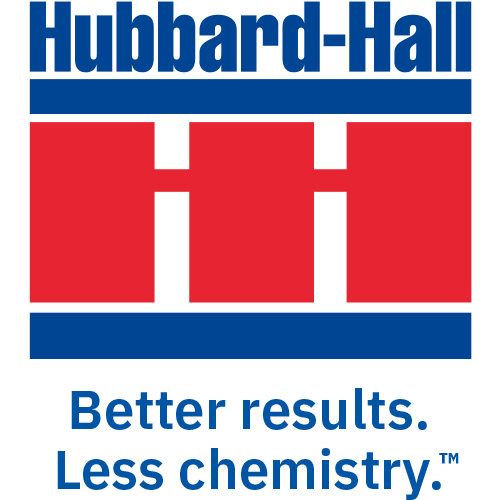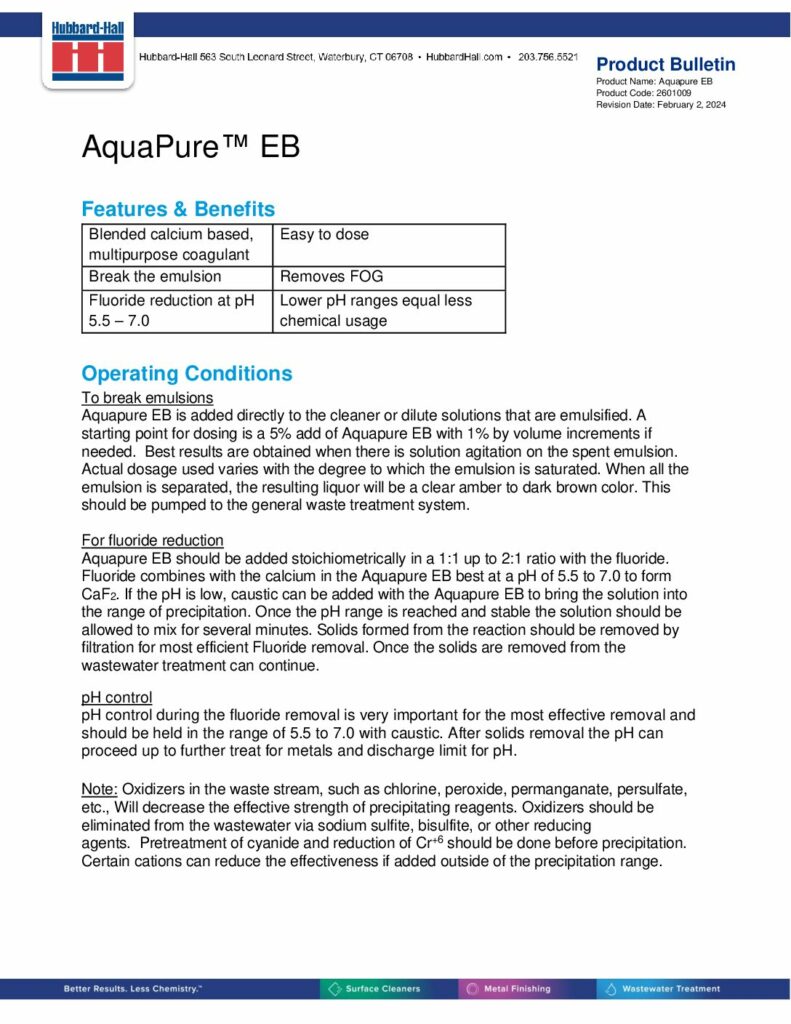Operating Conditions:
To break emulsions
Aquapure EB is added directly to the cleaner or dilute solutions that are emulsified. A starting point for dosing is a 5% add of Aquapure EB with 1% by volume increments if needed. Best results are obtained when there is solution agitation on the spent emulsion. Actual dosage used varies with the degree to which the emulsion is saturated. When all the emulsion is separated, the resulting liquor will be a clear amber to dark brown color. This should be pumped to the general waste treatment system.
For fluoride reduction
Aquapure EB should be added stoichiometrically in a 1:1 up to 2:1 ratio with the fluoride. Fluoride combines with the calcium in the Aquapure EB best at a pH of 5.5 to 7.0 to form CaF2. If the pH is low, caustic can be added with the Aquapure EB to bring the solution into the range of precipitation. Once the pH range is reached and stable the solution should be allowed to mix for several minutes. Solids formed from the reaction should be removed by filtration for most efficient Fluoride removal. Once the solids are removed from the wastewater treatment can continue.
pH control
pH control during the fluoride removal is very important for the most effective removal and should be held in the range of 5.5 to 7.0 with caustic. After solids removal the pH can proceed up to further treat for metals and discharge limit for pH.
Note: Oxidizers in the waste stream, such as chlorine, peroxide, permanganate, persulfate, etc., Will decrease the effective strength of precipitating reagents. Oxidizers should be eliminated from the wastewater via sodium sulfite, bisulfite, or other reducing
agents. Pretreatment of cyanide and reduction of Cr+6 should be done before precipitation. Certain cations can reduce the effectiveness if added outside of the precipitation range.







